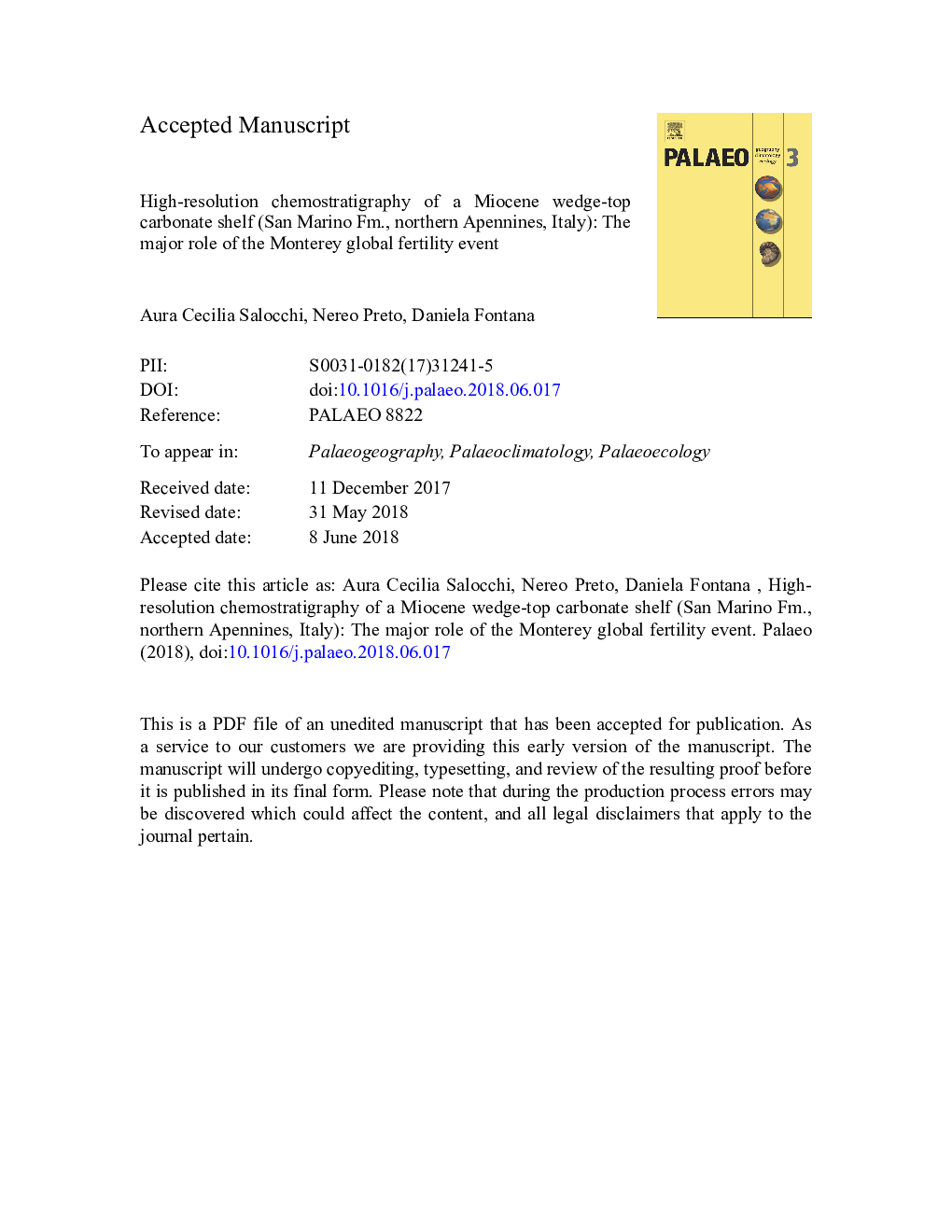| Article ID | Journal | Published Year | Pages | File Type |
|---|---|---|---|---|
| 8868170 | Palaeogeography, Palaeoclimatology, Palaeoecology | 2018 | 35 Pages |
Abstract
The evolution of the San Marino carbonate succession, developed on a wedge-top basin of the northern Apennines during the Middle Miocene (Torriana outcrop, Marecchia Valley), was studied through a high-resolution stable isotope analysis on different carbonate components. A marked positive carbon isotopic excursion is identified at ca. 16â¯Ma. The excellent correlation of the San Marino δ13C carbonates with the global δ13C reference curve from Zachos et al. (2008) allows to link the marked positive δ13C present in the San Marino section with the global carbon isotope maximum of the Monterey event. Subordinate long-eccentricity-driven δ13C cycles (~405â¯kyr) as recorded by Holbourn et al. (2007) were also identified. The correlation with carbon signatures of coeval successions of the Mediterranean region shows that this main carbon isotopic excursion at the Burdigalian-Langhian boundary is widely recorded and predates the crisis of these heterozoan shelves. The demise of the San Marino shelf resulted from a combination of global and regional factors that controlled the nutrient budget, the detrital input and the subsidence of the basin. The high-resolution chemostratigraphy of San Marino succession shows that even though the shelf evolved in the complex setting of a wedge-top basin, which should be largely influenced by local factors (i.e. tectonic subsidence and detrital input), it records the Monterey event and its eccentricity paced rhythms with high precision. This highlights the strong connection of the Monterey event with the development and subsequent demise of shallow water carbonate depositional systems in the Mediterranean, irrespective of variable and changing local conditions.
Related Topics
Physical Sciences and Engineering
Earth and Planetary Sciences
Earth-Surface Processes
Authors
Aura Cecilia Salocchi, Nereo Preto, Daniela Fontana,
